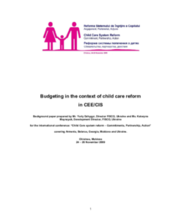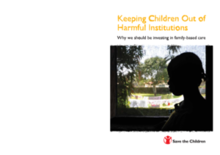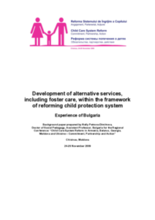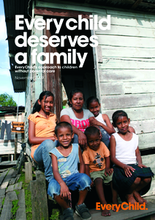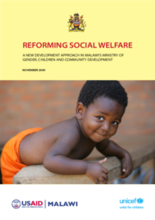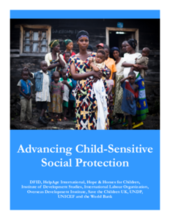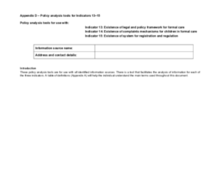Displaying 841 - 850 of 1015
Summarizes main issues in public financial management which have prevented resource reallocation between residential and alternative care services for children.
Examines the latest evidence of the harm institutional care can cause to children. It explores why governments and donors continue to prioritize institutional care, despite the harm it can cause.
The following is a summary of the Bulgarian experience in implementing a comprehensive reform of the care and protection system for children at-risk.
Explores the negative impacts of loss of parental care on children. Advocates for reform for children based on assertion that failure to keep children in families, out of residential institutions and off the streets, will be another barrier to the achievement of the Millennium Development Goals
This document outlines EveryChild’s approach to the growing problem of children without parental care by defining key concepts, analysing the nature and extent of the problem, exploring factors which place children at risk of losing parental care, and examining the impact of a loss of parental care on children’s rights.
Despite its importance to the poorest in society, the social welfare sector in Malawi has not been performing well. Recognising this, the Principal Secretary (PS) in the Ministry of Gender, Children and Community Development (MoGCCD) requested support from United Nations Children’s Fund (UNICEF) and United States Agency for International Development (USAID), who have taken a new approach: supporting the Government of Malawi (GoM) to build a better social welfare system starting at the top, within the Ministry.
This Report was drafted by a group of independent experts convened by Commissioner of the European Commission, Vladimír Špidla, in February 2009 to address the issues of institutional care reform in their complexity. The report addresses recommendations to Member States which have the main responsibility for action in this area.
Joint statement among UN agencies and NGO partners to build greater consensus on the importance of child-sensitive social protection.
Policy/analysis tools for manual to assist countries in strengthening their information system around children in formal care through data collection around 15 global indicators
Short video illustrating the ways social protection safeguards children and their families – including those affected by AIDS – at every level from communities to entire countries and beyond.

